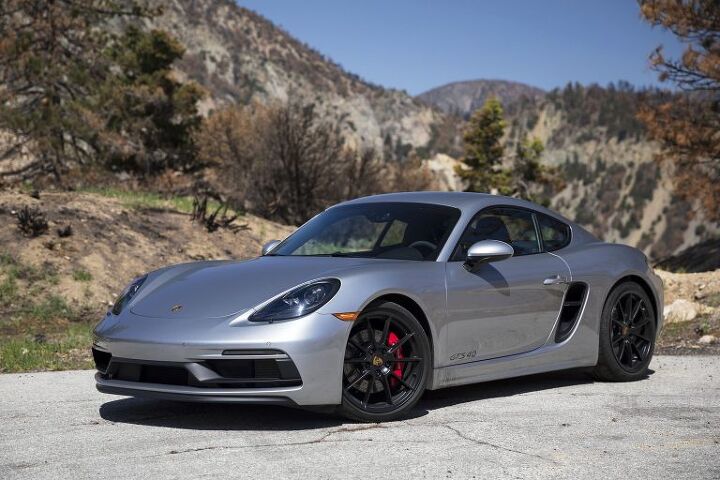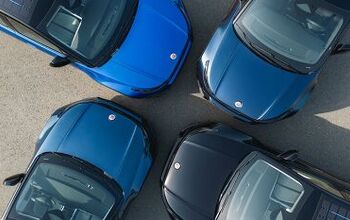2021 Porsche 718 Cayman GTS 4.0 Review - A Sports Car For All Occasions
2021 Porsche 718 Cayman GTS 4.0 Fast Facts
As the 911 has continued to expand in size and skillset over recent years, the line between its sporting and grand touring intentions has started to blur.
Versatility is certainly a virtue for any road-going performance vehicle, but for those looking for a dyed-in-the-wool sportscar, the platform shared between the Boxster and Cayman has always made more sense, offering better weight distribution thanks to its mid-engined layout and dimensions that harken back to the 911’s air-cooled days.
But for years Porsche’s mid-engined, two-seater played second fiddle to its iconic older brother, its capability seemingly held back by the entry-level designation it wore. While the second-generation Cayman R and Boxster Spyder showed that Porsche was willing to get somewhat serious about the platform’s potential, it wasn’t until the third generation’s Cayman GT4 that the notion was really driven home. Adopting a number of components from the track-focused 911 GT3 and the flat-six powerplant from the Carrera S, the GT4 was a hardcore performer that proved the Cayman no longer needed to live in the 911’s shadow.
When the fourth-generation 718 Cayman and Boxster launched in 2016, it also marked the debut of two new horizontally-opposed, flat-four-cylinder turbocharged engines – a 2.0-liter for base Cayman and Boxster models and a 2.5-liter turbocharged flat-four mill for the Cayman S and Boxster S. Although these new, more efficient turbo-fours offered significantly more grunt than their predecessors, the many of the Porsche faithful longed for the unchoked wail of the six-cylinder from years past, and they weren’t exactly quiet about it.
So, to appease potential 718 Cayman buyers that aren’t looking to step into GT4 territory, Porsche has created the GTS 4.0. While it’s motivated by a slightly detuned version of the 718 GT4’s 4.0-liter naturally aspirated flat-six, it’s more accurate to think of it as an upgraded Cayman S rather than a downgraded GT4, as the GTS 4.0 shows a greater emphasis on real-world use. The result is a masterful balance between performance and drivability, and one of the most well-rounded sports cars that you can buy today at any price.
Like GTS models of the past, the Cayman GTS 4.0 combines key performance hardware, comfort, and convenience features, and subtle aesthetic tweaks versus a Cayman S. Its hunkered-down stance comes by way of the standard Porsche Active Suspension Management (PASM) adaptive damper system, which is dialed in to provide more sport-oriented handling and lowers the car 20mm versus a standard Cayman. Along with reworked front and rear fascias, tinted taillights, and black accents from stem to stern, the black exhaust tips outfitted on the GTS 4.0 denote the presence of Porsche’s sport exhaust, an active system that offers volume control by way of a button on the center console (or by selecting either the Sport or Sport+ drive modes).
Without an aggressive aero package like the GT4, the GTS 4.0’s overall look merely hints at its performance potential rather than shouting it from the hilltops. That theme continues inside, where Porsche’s adjustable sport seats are fitted as standard, dark gray Alcantara abounds, and black trim elements are offset by either Carmine Red or Chalk accents depending on which equipment package has been chosen.
Material quality and fit and finish are expectedly top-notch, but the Porsche Communication Management infotainment system remains a notable weak point in the Cayman’s cabin. Although it’s reasonably responsive to inputs and includes all of the core functionality you’d expect from a modern system, the seven-inch touchscreen display looks dated compared to the 10.9-inch system used in the 992-generation 911, and it doesn’t support some features that are quickly becoming commonplace in mainstream vehicles, like wireless Apple CarPlay. I’d also recommend sticking with the base audio if you don’t care about music, or springing for the Burmester system if you do – the optional mid-level Bose surround-sound system in this tester isn’t worth the $990 price of admission.
Fortunately, the infotainment system is one of the very few faults to be found in the Cayman GTS 4.0. The car is effortless to pilot around town – the clutch is light with a clear engagement point, the adjustable sport seats are comfy, and in Normal drive mode, the suspension is actually pretty compliant. I should have been begging for mercy after a 300-mile round trip to the Thermal Club and back from central LA, but in its most sedate settings, the Cayman GTS 4.0 doesn’t beat you up for spending a few hours behind the wheel.
Still, it should come as little surprise that where GTS 4.0 really stuns is out in the canyons. Coming off of a week with a 992 Carrera S, I missed the mid-range pull of the boosted 911, but the Cayman scored big points for its additional revs, emotive flat-six soundtrack, better gearbox, and outright poise at the limit. It also doesn’t “shrink around you” because it’s already the right size for a sports car, and every input is precisely translated to the road thanks to its impeccable balance. The Cayman GTS 4.0 feels like a honed instrument of performance, whereas the Carrera S is a unique performance experience unto itself.
Contrary to some speculation, though, the GTS 4.0 doesn’t amount to a “GT4 Touring,” as back to back stints in the GTS and a 981-generation GT4 verified. While the GTS 4.0 makes a bit more power, it’s geared less aggressively, the suspension tuning is softer, and the Pirelli Pzeros offer noticeably less grip than the GT4’s wide Michelin Pilot Sport Cup 2s do. The optional carbon buckets are also well worth the added expense and compromise in comfort in a GT4, but they wouldn’t make much sense in the GTS 4.0 given how the rest of the car is set up.
That speaks to the larger mission of the GTS. While I have no doubt that it’s an absolute weapon on a road course, it’s tuned to be far easier to live with on the street than the GT4 is, and ultimately the pendulum has to swing one way or the other. Considering where Caymans typically rack up their mileage, the tuning of the GTS 4.0 yields a car that most folks would be more willing to hop into on a daily basis, and that’s probably worth more than a few tenths at your next track day.
[Images © 2021 Bradley Iger/TTAC]
More by Bradley Iger
Latest Car Reviews
Read moreLatest Product Reviews
Read moreRecent Comments
- Varezhka I have still yet to see a Malibu on the road that didn't have a rental sticker. So yeah, GM probably lost money on every one they sold but kept it to boost their CAFE numbers.I'm personally happy that I no longer have to dread being "upgraded" to a Maxima or a Malibu anymore. And thankfully Altima is also on its way out.
- Tassos Under incompetent, affirmative action hire Mary Barra, GM has been shooting itself in the foot on a daily basis.Whether the Malibu cancellation has been one of these shootings is NOT obvious at all.GM should be run as a PROFITABLE BUSINESS and NOT as an outfit that satisfies everybody and his mother in law's pet preferences.IF the Malibu was UNPROFITABLE, it SHOULD be canceled.More generally, if its SEGMENT is Unprofitable, and HALF the makers cancel their midsize sedans, not only will it lead to the SURVIVAL OF THE FITTEST ones, but the survivors will obviously be more profitable if the LOSERS were kept being produced and the SMALL PIE of midsize sedans would yield slim pickings for every participant.SO NO, I APPROVE of the demise of the unprofitable Malibu, and hope Nissan does the same to the Altima, Hyundai with the SOnata, Mazda with the Mazda 6, and as many others as it takes to make the REMAINING players, like the Excellent, sporty Accord and the Bulletproof Reliable, cheap to maintain CAMRY, more profitable and affordable.
- GregLocock Car companies can only really sell cars that people who are new car buyers will pay a profitable price for. As it turns out fewer and fewer new car buyers want sedans. Large sedans can be nice to drive, certainly, but the number of new car buyers (the only ones that matter in this discussion) are prepared to sacrifice steering and handling for more obvious things like passenger and cargo space, or even some attempt at off roading. We know US new car buyers don't really care about handling because they fell for FWD in large cars.
- Slavuta Why is everybody sweating? Like sedans? - go buy one. Better - 2. Let CRV/RAV rust on the dealer lot. I have 3 sedans on the driveway. My neighbor - 2. Neighbors on each of our other side - 8 SUVs.
- Theflyersfan With sedans, especially, I wonder how many of those sales are to rental fleets. With the exception of the Civic and Accord, there are still rows of sedans mixed in with the RAV4s at every airport rental lot. I doubt the breakdown in sales is publicly published, so who knows... GM isn't out of the sedan business - Cadillac exists and I can't believe I'm typing this but they are actually decent - and I think they are making a huge mistake, especially if there's an extended oil price hike (cough...Iran...cough) and people want smaller and hybrids. But if one is only tied to the quarterly shareholder reports and not trends and the big picture, bad decisions like this get made.







































Comments
Join the conversation
I finally got mine last week after a 5 month wait. I couldn't love it more. It is a total blast!
This car is pure sex, gives me a big old chubby.